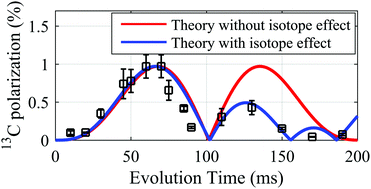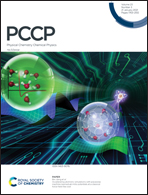High field parahydrogen induced polarization of succinate and phospholactate†
Abstract
The signal enhancement provided by the hyperpolarization of nuclear spins of metabolites is a promising technique for diagnostic magnetic resonance imaging (MRI). To date, most 13C-contrast agents are hyperpolarized utilizing a complex or cost-intensive polarizer. Recently, the in situ parahydrogen-induced 13C hyperpolarization was demonstrated. Hydrogenation, spin order transfer (SOT) by a pulsed NMR sequence, in vivo administration, and detection was achieved within the magnet bore of a 7 Tesla MRI system. So far, the hyperpolarization of the xenobiotic molecule 1-13C-hydroxyethylpropionate (HEP) and the biomolecule 1-13C-succinate (SUC) through the PH-INEPT+ sequence and a SOT scheme proposed by Goldman et al., respectively, was shown. Here, we investigate further the hyperpolarization of SUC at 7 Tesla and study the performance of two additional SOT sequences. Moreover, we present first results of the hyperpolarization at high magnetic field of 1-13C-phospholactate (PLAC), a derivate to obtain the metabolite lactate, employing the PH-INEPT+ sequence. For SUC and PLAC, 13C polarizations of about 1–2% were achieved within seconds and with minimal equipment. Effects that potentially may explain loss of 13C polarization have been identified, i.e. low hydrogenation yield, fast T1/T2 relaxation and the rarely considered 13C isotope labeling effect.



 Please wait while we load your content...
Please wait while we load your content...